Bijou bottles are used for transporting and storing microbial cultures in the microbiology laboratory. They are basically cylindrical small glass bottles fitted with a screw cap, and bijou bottles are generally used as a culture medium container for microorganisms (inclusive of bacteria and fungi).
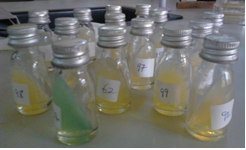
Test tube racks are commonly used in the microbiology laboratories to keep test tubes upright so that the equipment does not roll away, spill or become accidentally cracked. It allows test tubes (especially glass test tubes which are delicate in form) to be properly arranged accordingly and numbered during an experimentation. Test tube rack keeps test tubes in place when they are not being actively used; and they can be used to transport the tubes from one point of the laboratory to another without damage.
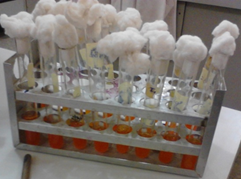
Swab sticks are important tools usually made of a stick or short rod that is wrapped with cotton at one end. They are used for a variety of purposes in the microbiology laboratory. For example, swab sticks are used for swabbing the surface of a solid culture medium during antimicrobial susceptibility testing in order to obtain a confluent growth. They can also be used to obtain clinically relevant specimen from sick patients e.g. from the throat, ear and nose regions. Swab sticks can also be used to swab other inanimate and animate surfaces in order to collect samples for analysis in the laboratory. They are mainly moistened in physiological or normal saline prior to their usage for sample collection.
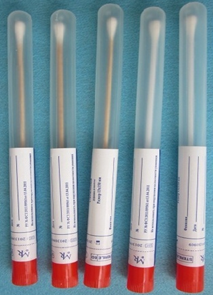
McCartney bottles are specially designed bottles which are used to preserve microbial growth or culture especially those of bacteria and fungi in the laboratory. They perform almost the same function as the bijou bottles but McCartney bottles are much bigger than the bijou bottles. McCartney bottles are also used to prepare slants of nutrient agar upon which samples or microbial cultures are streaked and allowed to grow. They also support the growth of microbes in broth or liquid medium.
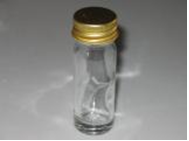
Test tubes are used to hold and mix small quantities of reagents and chemicals in the microbiology laboratory. They can also be used to hold microbial cultures in suspension during some experimentation such as in biochemical testing’s e.g. indole test. Glass test tubes also provide the ideal medium for holding and heating materials and other reagents over a Bunsen burner flame in the laboratory. Plastic test tubes also exist for some experimentation, but they cannot be autoclaved or sterilized in the hot air oven as is applicable for glass test tubes.

Specimen containers are specially designed vessels which are used to collect and transport samples collected from patients or from environmental sources. Some specimen containers contain preservatives which help to preserve the specimen and ensure that contaminants do not thrive in them prior to their usage. Typical example is specimen containers for collecting mid-stream urine (MSU) samples. Such containers contain boric acid that prevents the growth of commensals. Different specimen containers are used for collecting different clinical or environmental samples.
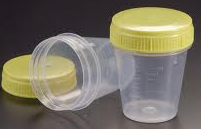
Conical flasks are used for mixing and transferring liquids in the microbiology laboratory. They are also used for preparing nutrient agar medium; and conical flasks are usually the ideal medium for sterilizing nutrient agar solution in the autoclave. Several sizes of conical flasks exist and typical examples include 1000 ml, 500 ml, 200 ml and 100 ml conical flasks. After use, conical flasks should be properly washed and dried and kept in the laboratory cupboards for safe keeping. The mouth of conical flasks is usually stoppered with cotton wool or rubber bung to prevent the contamination of the liquid it contains.
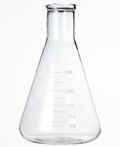
Plastic pipette is used for transferring chemical substances especially in solution forms from one vessel to another. Mouth pipetting is not allowed in the microbiology laboratory; and thus the plastic pipette and other automated types of pipettes (such as the micropipettes) are the ideal medium through which reagents and other liquids can be transferred from one tube to another in the microbiology laboratory. Several sizes of plastic pipettes exist; and pipetting can also be carried out using disposable pipette tips that are fitted onto special pipette holders.

Beakers are cylindrical vessels which are used for mixing or stirring liquids in the microbiology laboratory. They are also used to heat liquids and other solutions over a Bunsen burner flame in the laboratory. Several sizes of beakers ranging from 50 ml beakers to 1000 ml beakers and above exist for various analytical procedures in the microbiology laboratory. Beakers are usually made of glass and they should be handled with care to avoid breakage. After use, beakers should be properly washed and dried and kept in the laboratory cupboards for safe keeping.

REFERENCES
Cheesbrough, M (2006). District Laboratory Practice in Tropical countries Part I Cambridge
Chung K.T, Stevens Jr., S.E and Ferris D.H (1995). A chronology of events and pioneers of microbiology. SIM News, 45(1):3–13.
Dictionary of Microbiology and Molecular Biology, 3rd Edition. Paul Singleton and Diana Sainsbury. 2006, John Wiley & Sons Ltd. Canada.
Goldman E and Green L.H (2008). Practical Handbook of Microbiology, Second Edition. CRC Press, Taylor and Francis Group, USA.
Discover more from #1 Microbiology Resource Hub
Subscribe to get the latest posts to your email.


